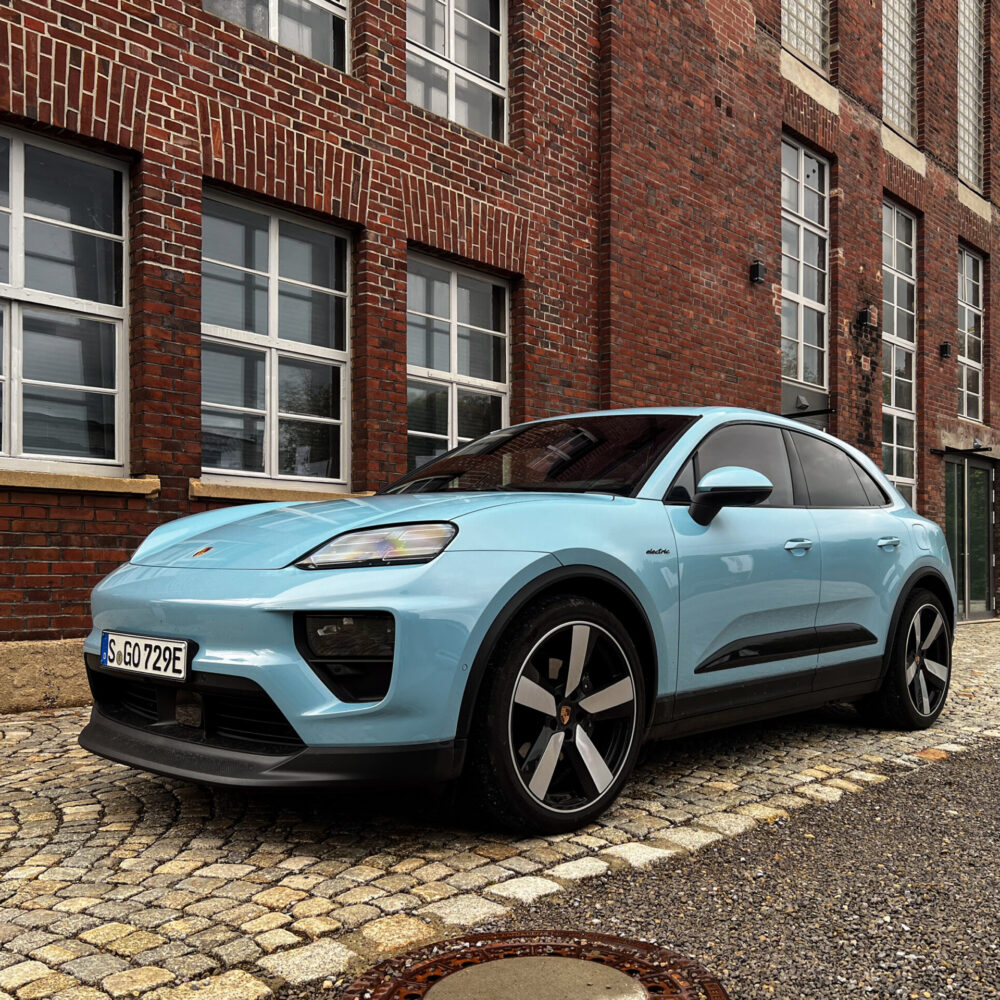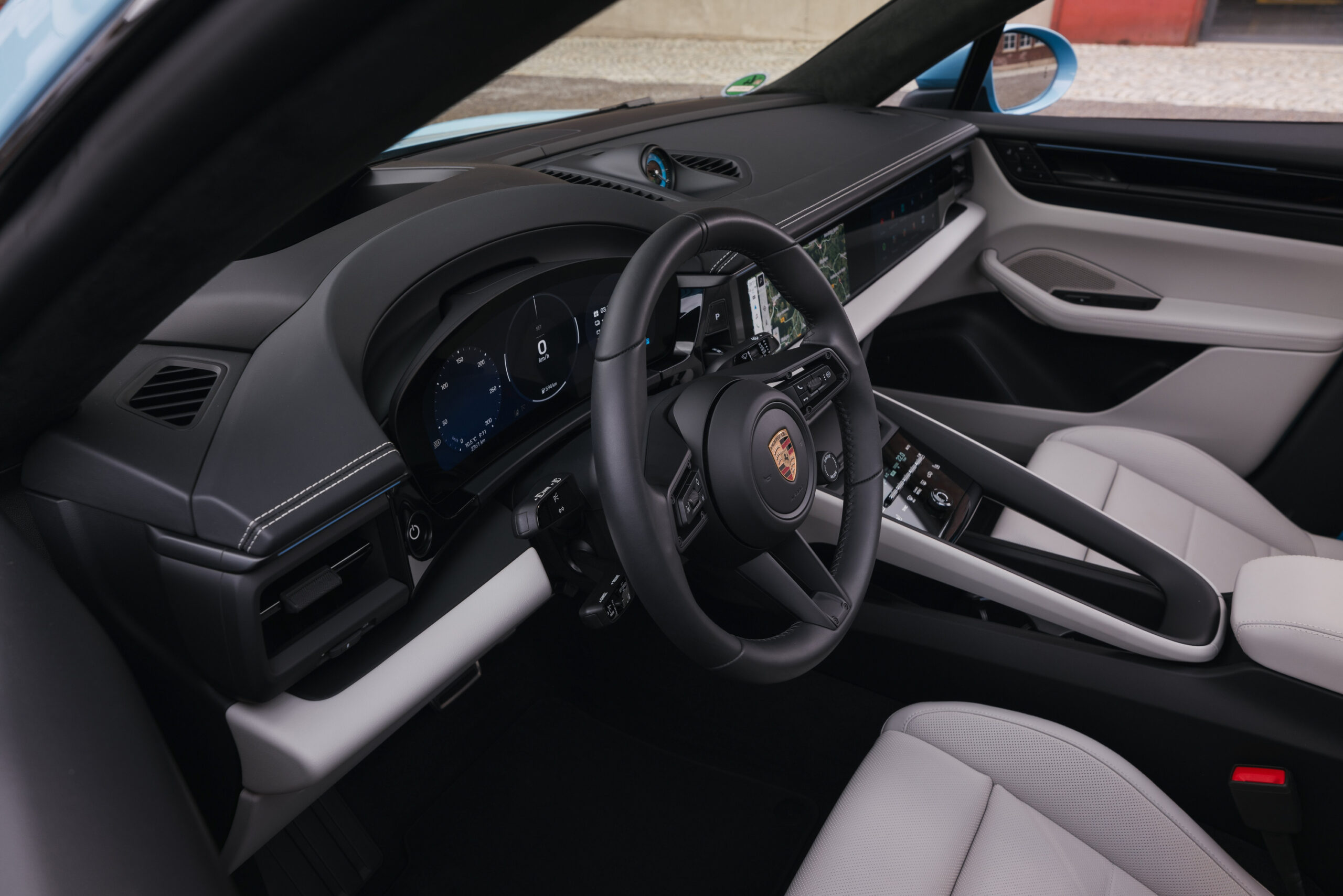The base model is always the best—we drive the 2025 Porsche Macan
We drive the RWD Macan and the twin-motor Macan 4S.

If you liked the way the old Macan looked and drove, you’re probably going to like the way the electric one looks and drives.
Credit:
Jonathan Gitlin
STUTTGART, Germany—Porsche made its reputation with its rear-engined sports cars, but today it’s the SUVs that even make that possible. But it makes those SUVs in order to appeal to Porsche drivers, offering five-door practicality but with driver-engaging handling, and a certain level of fit and finish. I’ve always thought of the Macan as Porsche’s answer to the hot hatch, and now it’s gone electric. We tested two variants of the new Macan EV earlier this year, and came away impressed. Now we’ve had seat time in another pair: the $75,300 rear-wheel drive Macan, and the $84,900 Macan 4S.
Ars has written quite a lot about the development of the Macan’s Premium Platform Electric, which it helped develop with VW sibling Audi. Porsche has a lot of history adapting VW group platforms, from the previous generations of Cayenne and Macan all the way back to the very first car to wear the family name, 356/1, which spiced up some Beetle bits in a handsome roadster body.
The entry level Macan is unique among the range for having just a single electric motor, which drives the rear wheels. With a nominal 335 hp (250 kW)—boosted to 355 hp (265 kW) with launch control—and 415 lb-ft (562 Nm), it’s the least-powerful Macan but also the lightest (by 242 lbs/110 kg) and the most efficient, with an EPA range estimate of 315 miles (506 km) from the 100 kWh (95 kWh useable) battery pack.
As all the Macan variants use the same battery pack, the base model has no compromises when it comes to charging. Thanks to the pack’s 800 V architecture, it can charge at rates of up to 270 kW, and charging from 10–80 percent should take as little as 21 minutes. Porsche says that the pack should fast charge at rates above 200 kW until the state of charge reaches 55 percent, something we’ll test out when cars arrive in the US. Those initial cars will be fitted with CCS1 ports, we’re told, although Porsche EVs should gain access to the Tesla Supercharger network next year.
At 9.6 kW, with an AC level 2 charge, expect to take about 11 hours to go from zero percent state of charge to 100 percent.
US-market Macans will all have air suspension as standard, and together with the optional rear-axle steering on our test car, the results are a highly nimble EV. While it’s the slowest Macan, it’s not exactly a slow car, with enough torque for overtaking when you need it. (Top speed is 136 mph (219 km/h), which is academic everywhere outside of Germany.)

The main instrument display is the same as in the Taycan.
Credit:
Porsche
What you give up in horsepower, you get back in handling. Most of the weight saving is over the front axle, and more than once, my colleague and drive partner called the steering “Alfa Romeo-like.” I’ve gone on record before saying that the cheaper, less-powerful EV is often the one to get, and I don’t think I’d feel at all disappointed or wistful for the more powerful twin-motor all-wheel drive versions if I happened to find a base Macan in my parking spot one day.
The attributes that make it a good driver’s car on a Swabian back road also predispose it toward good behavior when it’s time to trundle slowly through town. The throttle is extremely easy to modulate, but you must use the brake pedal to slow down. The concept of one-pedal driving remains anathema to Porsche’s board. Porsche honed its brake-by-wire technology via its hybrid Le Mans cars, and on the road, the left pedal felt entirely natural to use.
Macan 4S
Of course, a lot of Porsche’s customers do want more performance out of their Macan. The spiciest of all is the $105,300 Turbo, which we tested in May. The Macan 4S will probably be the bestseller, though. This uses a pair of permanent magnet synchronous motors, one for each axle. The rear motor is of the same family as the base Macan, with a larger diameter but shorter length and a 600 A inverter rather than the 480 A inverter in the base car.
Combined output is 442 hp (330 kW) and 578 lb-ft (784 Nm), which increases to 509 hp (380 kW) and 604 lb-ft (819 Nm) with launch control.
And that’s sufficient to propel you from a toll booth to 60 mph in 3.9 seconds and to reach a Vmax of 149 mph (240 km/h)—again, assuming you have a derestricted stretch of German Autobahn to hand. German car makers tend to build EVs that coast well—the Germans call it “sailing”—and the Macan 4S is no exception. On level ground, it seems to take forever for the slippery shape (a drag coefficient of 0.26) to start slowing, and any kind of downhill is an opportunity to get some free energy. (Yes, technically it’s not free, but we all know what I mean.)
The 4S wore grippier Michelin Pilot Sport EV tires versus the Goodyears on the base car but gave up little ride comfort on albeit very smooth German roads. You can decouple the stiffness of the air suspension from the main drive mode. So it’s possible to set the car to Sport+, which turns the powertrain all the way up, but set the dampers to Sport or even Normal, which is a boon for those of us who live somewhere with less-than-German quality roads. All told, the 4S should come in with an EPA range of 288 miles (464 km).
Although I spent a day last year driving Macan prototypes while Porsche was using them to do some localization work, those cars were heavily camouflaged inside and out, so this was my first real experience with the production interior. Compared to the internal combustion engine Macan, which stays on sale for another couple of years, it’s much less cramped for passengers in the front and back.
There are physical controls for the climate settings, and unlike the Taycan and some other cars of late, you aim the air vents by physically pointing them at you, using the wonderfully tactile rubber grips. It’s welcome to see an automaker step back from an all-touchscreen user interface, although your finger will still get plenty to do on the main infotainment screen.
Porsche’s system is now built atop Android Automotive, which means third-party apps are becoming more plentiful. But the voice recognition and natural language processing happens in Porsche’s cloud and is more capable than the current state of Google’s voice assistant. Android Auto and Apple CarPlay are both present, and with such a high percentage of Apple users among its owners, Porsche wrote an iOS app that lets you control the car’s climate or radio without leaving Apple’s casted garden.
Clever doors
In addition to better understanding you when you’re speaking to the car, the Macan also has a thoughtful way of getting your attention. Like many new cars, the interior lighting is LED-based, with numerous permutations, combinations, and themes. But the upper strip in the door will turn bright yellow if there’s a vehicle in that side’s blind spot. There’s also an optional augmented reality heads-up display, which may divide opinion—I appreciated its presence, but my driving partner did not.
We’ve seen this AR-HUD technology on other cars for a while now. Here, the notable thing was how clear the display appeared and how much better it looked while wearing polarized sunglasses than the HUDs you may be used to.
From the driver’s seat, you won’t have a clear view of the passenger infotainment screen, should you option such a thing. I’ve yet to be convinced about the utility of a whole extra infotainment system for the front seat passenger, who can operate the one in the middle of the car without much difficulty. The coating or film on the screen that makes it appear black from the driver’s viewing angle did not do a whole lot for picture quality for the passenger, either. I even got a little carsick trying to use the screen, although that went away before too long once I was reacquainted with the horizon.
Macan owners tend not to cross-shop much, apparently. There’s the Polestar 4, or will be, but that brand is yet to have the recognition or the dealer network that Porsche owners expect. And neither BMW’s M-ish iX nor Mercedes’ AMGified EQE really comes close to the Porsche’s driving experience.
Many Macan buyers already have another Porsche and want something for everyday use with a trunk. Compared to the gasoline Macan, this new electric one is a big upgrade. The performance is much more accessible, but it’s also much easier to drive slowly with the lower speed limits that are more and more common in towns and cities around the world.
Most buyers will opt for all-wheel drive, and the 4S has sufficient performance that someone picking that car needn’t look wistfully at the Turbo, unless they really love that model’s “turbonite” color badging. But in the same way that a 911 Carrera T reminds us that less power and less weight usually makes a better Porsche, so too should the Macan EV.

Jonathan is the Automotive Editor at Ars Technica. He has a BSc and PhD in Pharmacology. In 2014 he decided to indulge his lifelong passion for the car by leaving the National Human Genome Research Institute and launching Ars Technica’s automotive coverage. He lives in Washington, DC.

